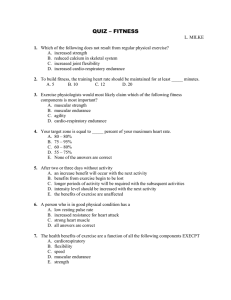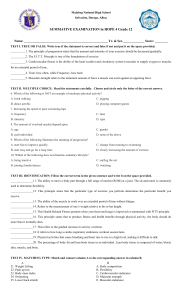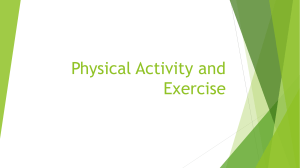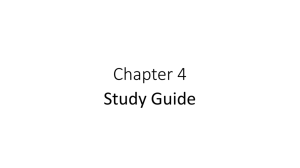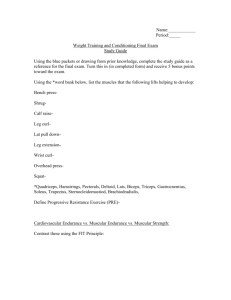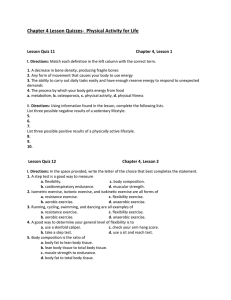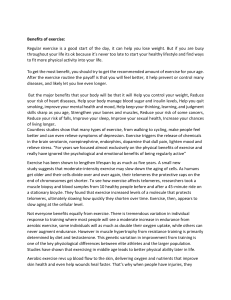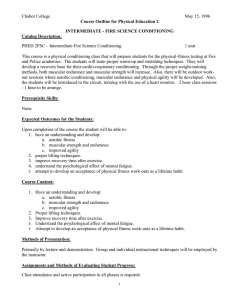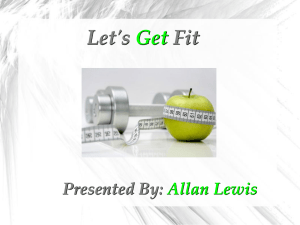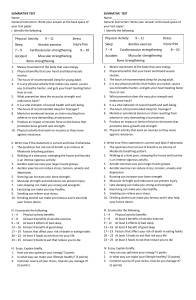Physical Activity for Life
advertisement
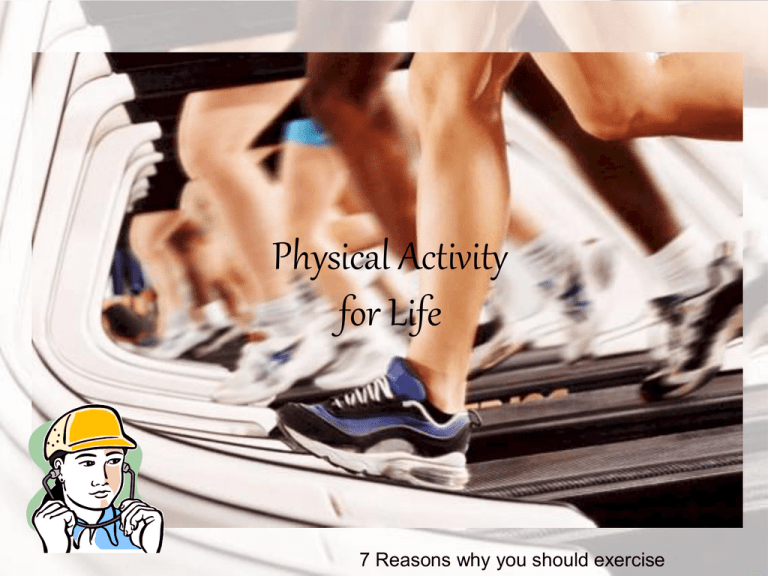
Physical Activity for Life 7 Reasons why you should exercise In this lesson you will learn Analyze how regular physical activity will enhance and maintain health Describe the effects of regular physical activity on body systems. Assess how regular physical activity aids in disease prevention Combine Physical activity into your daily life physical activity • Any form of movement that causes your body to use energy physical fitness • The ability to carry out daily tasks easily and have enough reserve energy to respond to unexpected demands sedentary lifestyle • A way of life that involves little physical activity. osteoporosis • A decrease in bone density, producing fragile bones metabolism • The process by which your body gets energy from food Elements of Fitness cardio respiratory endurance. The ability of the heart, lungs and blood vessels to work efficiently during long periods of activity. A step test is a good way to measure cardio respiratory endurance. Muscular Strength The ability to exert maximum force, such as lifting the heaviest weight you can budge, one time. It is possible to have muscular strength in one area, say your arms, while lacking strength in another area such as your legs. Muscular Endurance The ability to hold a particular position for a sustained period of time or repeat a movement many times. This could be the capability required to hold a twopound weight above your head for five minutes or the effort required to lift that weight 20 consecutive times. Flexibility The ability to move a joint through its full range of motion; the elasticity of the muscle. This is how limber you are. The sit and reach test Is a good way to determine your general level of flexibility. Body composition is the ratio of body fat to lean body tissue. The proportion of fat in your body compared to your bone and muscle. It does not refer to your weight in pounds or your "figure-type." EXERCISE Is purposeful physical activity that is planned, structured, and repetitive and that improves or maintains personal fitness. aerobic exercise Include running, cycling, swimming, and dancing aerobic exercise resistance exercises Include isometric exercise, isotonic exercise, and isokinetic exercise Lifting free weights is a form of isotonic exercise. Hand out • Study Guide II Side effects of anabolic steroid consumption • sterility, hair loss, acne It is illegal to use anabolic steroids without a prescription. resting heart rate • decreases when a person becomes physically fit. frequency • is a measure of how often you perform an activity. workout • is the portion of the exercise program when activity is at its peak. warm-up • Should be the first stage in any physical activity routine. • You should perform a cool down to prepare your muscles for a return to the resting state. cross training • a variety of exercise routines that work different body systems. Safety tips for all sports and training • have a health screening, • obey rules and restrictions muscle cramp A minor injury that might result from physical activity. A sprain is an injury to a ligament The R.I.C.E. procedure is useful for minor injuries Symptoms of dehydration • dizziness, • fatigue, • muscle cramps Staying hydrated during physical activity is important in all types of weather. Safety tips for water sports • avoid drugs and alcohol, • learn to swim • You should never swim alone. Whitening of the skin and lack of feeling are early warnings of frostbite. Herbal supplements • cannot substitute for healthy eating. Sleep • On average, teens need eight to ten hours of sleep every night to function at their best sleep • restful state in which there is no conscious thought • Your heart slows down ten to 15 beats per minute during sleep Side effects of getting too little rest • slowed reaction time, • forgetfulness, • irritability TEST Check out Study Guide at: On the Angel Page.
